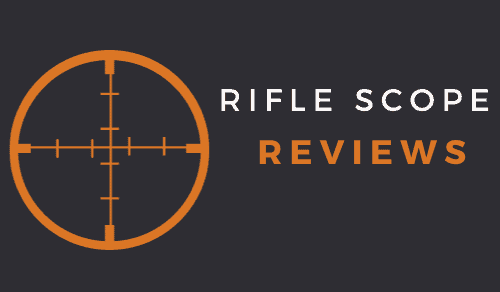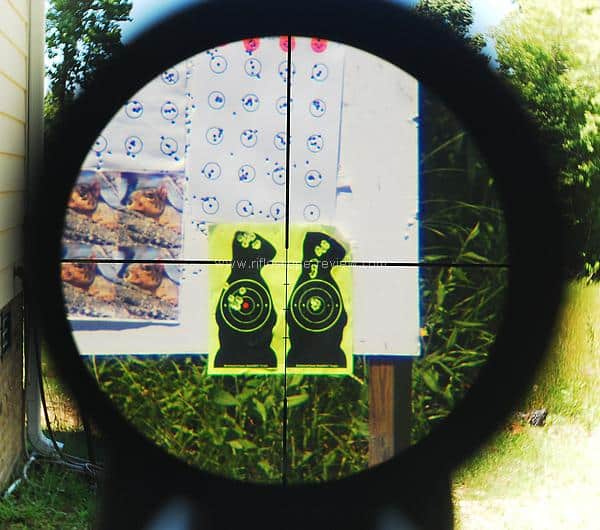As an Amazon Associate I earn from qualifying purchases. Amazon and the Amazon logo are trademarks of Amazon.com, Inc, or its affiliates.
The Mils versus MOA discussion has been on-going in the long range shooting circles for years, and really shows no evidence of slowing down. I could write a detailed review that covers the pros and cons of each sighting methodology, but I’m not going to. Why? Because someone with more long range shooting experience and training already did. Rather than try to paraphrase that content, I’m just going to repost it here in it’s entirety with complete and full credit.
This article was written by Frank Galli, who is a contributing author at Sniperhide,com, which is really more of a forum than a website, and a top source of content and discussions on long range and long distance shooting. Here’s a link to Mr. Galli’s author page at Sniperhide: https://www.snipershide.com/author/lowlight/, and here’s the article quoted directly:
“This debate is never going to end, but we should agree on the facts. Every day we see the uninformed arguments how one angular unit of measurement is better than the other. The truth of the matter is, one is not better, they are just different ways of breaking down the same thing.
Personally, outside of the disciplines like Benchrest Shooting and F Class, I think Minutes of Angle should be retired. We have bastardized the unit to the point people have no idea a true MOA is not 1″ at 100 yards, or 10″ at 1000, but 1.047″ and 10.47″ at 1000. If you round this angle, you create errors at the longer distances. Today we shoot a lot farther than before, 5% of error compounding at an extended range will cause a miss. In fact, this is one of the main reason your ballistic software does not work. You default to MOA when in reality your scope adjusts in Inches Per Hundred Yards.
Shooter MOA or Inches Per Hundred Yards (IPHY) is not a True MOA, and yes it does matter when companies mix them. Having someone question how IPHY is different when they don’t understand we don’t use 1 MOA or even 10 MOA to hit a 1000 yard target is frustrating to explain. If we consider a 308 as a point of reference, we are looking at almost 17″ of variation between the two units of adjustment.
We can quickly point to the adoption of Mils here with the Military to demonstrate the ease of use, but then the Americans reading this will argue how they think in Inches and Yards as if Mils only work with the metric system. Mils are base 10 and unfortunately Mr & Mrs. America thinking in fractions is nowhere as simple.
3600 inches is 100 yards, 1/1000 of that is 3.6″ and adjusting in .1 mils means we moved the bullet .36″ per click at 100. See what we did there, we moved the decimal point. Some people believe an MOA is a finer unit of adjustment. Failing to note that: .3 Mils is 1.08″ at 100 yards. Contrary to popular belief you can get a Mil Based scope that moves the reticle .18 Inches per click. Mil based scopes usually adjust in .1 Mil Increments; however, they do make scopes that adjust in .05 Mils.
While Milliradians were added to the metric system many years ago, it was never designed to be a metric only unit and works outside the metric system as this is an angle. Every angle has a linear distance between it. You should be ignoring this fact and using the angle vs. picking a linear value to adjust your correction. If I am shooting 873 yards away, saying the bullet 6″ off the target is neither honest or accurate. You’re guessing; in your mind, it looked six inches away, but what if it was 9″? Using the linear value is more work, why not just adjust the angle?
Minutes of Angle started out like that too, but unfortunately, companies took shortcuts and ruined it for everyone. It was easier to manufacturer 1″ vs. adding in the .047″. Long range back in the day was between 400 and 800 yards. Read any old school book on ballistic, and it rarely goes past those ranges in their examples. Today we are shooting beyond 1000 yards, so it matters more than ever, you have to take it into account.
Defaulting your program to MOA when you are using IPHY is a significant point of error. JBM online is a great place to demonstrate this as you can include both MOA and IPHY in the output. The same amount of adjustment is accomplished with two different values. Mix these numbers, and the result is a miss. Did you dial 40.1 or 38.3 MOA?
I highly recommend you map and calibrate your MOA scope to confirm it’s actual value. It works both ways, not every MOA based scope is TMOA, some are SMOA. The compounding error is a lot bigger than .47 inches.
One is not more accurate than the other. I can hit the center of any target using either unit of adjustment. Using JBM the same way we can see that both correctly move us to the target. The difference is less than a bullet width. I have no trouble zeroing or hitting the center of a Shoot N C target keeping me squared away.
Which unit of adjustment is right for me?
This is the ultimate question; it should not be up to someone else to answer it for you. Communication is your number one consideration.
What are your friends and fellow competitors shooting?
You want to be able to communicate and understand what a fellow competitor is talking about when he walks off the line. You can convert using 3.43, by multiplying or dividing the competing unit of adjustment against the other. That will give you a direct conversion.
12 MOA / 3.43 = 3.5 Mils
4.2 Mils x 3.43 = 14.4 MOA
Next, you have your reticle choices. You will find more versatile options when it comes to Mil Based scopes vs. an MOA one. That is changing a small amount as manufacturers adapt. But a reticle with 1 MOA hash marks is not as fine as a scope with .2 Mil lines in it. You now have to break up an already small 1 MOA into quarters. The Mil based scope is already breaking up the Milliradian for you.
Pick the reticle based on your initial impression as well as your use. You don’t need a Christmas tree reticle to shoot F Class. You don’t want to use a floating dot bench rest scope for Tactical Style Competition. Put your intended use into the proper context.
There are a lot of articles about the nuts and bolts of Mils and MOA. You can dig deep or understand we are using the angle and there is no need to convert to a linear distance. A Mil is a Mil, and an MOA is an MOA (Unless it’s not because you didn’t check) Today I don’t even teach, 1″ at 100, 2″ at 200 yards, 5″ at 500 yards. It’s an unnecessary step and confusing to a lot of people. Not to mention, it’s not right, that is IPHY, not MOA.
We match our scope reticle to our turret adjustment, so at the end of the day, “What you See is What You Get.” It matches what we see in the reticle so we can dial the correction on the turret. A super simple concept that allows the shooter to use the calibrated ruler 3 inches in front of their nose. That calibrated ruler is called a reticle taking away the need to “Think” about the adjustment, you just read it.
If the impact is off in any direction, you measure with the reticle and then translate that reading directly to the turrets. 1 Mils is always 1 Mil, and 1 MOA in any direction is a 1 MOA correction on the turret.
If you have not made the change to Mils, consider it. You will find it’s much more intuitive. You do not have to be a resident of Germany to understand it, and you do not have to use it with Meters. All my data is in yards, and mils directly translate to whatever range you use.”
And here the direct link to this full article at Snipershide.com.
My thoughts: If are new to long distance shooting, then you may not fully understand the full scope of his points about migrating over to a Mils system versus an MOA system. However, based on my experience, (and it’s not near as in-depth as Mr. Galli’s), I agree with his points. I’ve tried both approaches and have shooting buddy’s who prefer MOA over Mil and others who prefer Mil over MOA. I find MOA to be the more complicated of the two approaches, but understand the attraction to it.
When I attended my first long range shooting class, the instructor went over both approaches with pros and cons of each. Mils was an easier approach for me to grasp in my head, but the instructor was an MOA fan, so that’s what I first learned to shoot. Since then, I’ve shot with guys (and girls) who are Mil based shooters, and once I gave that approach a try, I stuck with it. Once in awhile I’ll go back to shooting a rifle that is set-up for MOA, but I’ve slowly been switching rifles over to a Mil set-up.
Now for hunting purposes, I take a different approach, and prefer Mil-dots. I’m a Mil-dot fan because once I know the distance to the game, I know the corresponding mil-dot to use for that range. For me, that approach is quicker in the field as you may not have the time to do the same math in your head that you would on the range. For me, it’s range to game, then matching the necessary mil-dot up to on target, and fire. Now that approach may not work for some people, but it works great for me in the field.
If you’d like to read some other Mils versus MOA comparison data, here are some other good sources:
- Precison Rifle Blog: https://precisionrifleblog.com/2013/07/20/mil-vs-moa-an-objective-comparison/
- Shooting Illustrated: https://www.shootingillustrated.com/articles/2011/2/18/mil-moa-or-inches/
- Guns & Ammo: https://www.gunsandammo.com/editorial/mils-vs-moa/248298
I’ve been working in the firearms and sporting optics industry for over 20 years, with a personal and professional interest in all things related to rifle scopes, Through a combination of work experience, formal training, and personal experiences, I have extensive experience mounting, testing, and evaluating different rifle scope models across most major optical brands.


